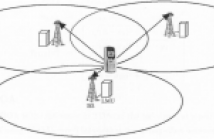- Read more about A NEW ARRAY GEOMETRY FOR DOA ESTIMATION WITH ENHANCED DEGREES OF FREEDOM
- Log in to post comments
This work presents a new array geometry, which is capable of providing $O(M^2N^2)$ degrees of freedom (DOF) using only $MN$ physical sensors via utilizing the second-order statistics of the received data. This new array is composed of multiple, identical minimum redundancy subarrays, whose positions follow a minimum redundancy configuration. Thus the new array is a minimum redundancy array (MRA) of MRA subarrays, and is termed {\em nested MRA}. The sensor positions, aperture length, and the number of DOF of the new array can be predicted if these parameters of MRA subarrays are given.
- Categories:
 9 Views
9 Views- Read more about THE SPHERICAL HARMONICS ROOT-MUSIC
- Log in to post comments
Spherical harmonics root-MUSIC (MUltiple SIgnal Classification) technique for source localization using spherical microphone array is presented in this paper. Earlier work on root-MUSIC is limited to linear and planar arrays. Root-MUSIC for planar array utilizes the concept of manifold separation and beamspace transformation. In this paper, the Vandermonde structure of array manifold for a particular order is proved. Hence, the validity of root-MUSIC in the spherical harmonics domain is confirmed. The proposed method is evaluated by using simulated experiments on source localization.
- Categories:
 13 Views
13 Views
- Read more about Terrain-Scattered Jammer Suppression in MIMO Radar Using Space-(Fast) Time Adaptive Processing
- Log in to post comments
We address the problem of terrain-scattered jammer suppression in multiple-input multiple-output (MIMO) radar using space-(fast) time adaptive processing (SFTAP). The correlation function of jamming components after matched filtering at the receiving end of MIMO radar is derived, and its relationship to the correlation matrix of the transmitted waveforms is established. This correlation function serves as a theoretical measure of evaluating the matched filtering effect on the received jamming signals.
- Categories:
 18 Views
18 Views- Read more about Direction of Arrival Estimation in MIMO Radar Systems With Nonlinear Reflectors
- Log in to post comments
- Categories:
 23 Views
23 Views- Read more about Transmit radiation pattern invariance in MIMO radar with application to DOA estimation
- 1 comment
- Log in to post comments
ICASSP 2016 presentation, Session: SAM-P1 - MIMO Radar, Tuesday, March 22, 16:00-18:00
- Categories:
 17 Views
17 Views- Read more about Multiple Scattering Effects on the Localization of Two Point Scatterers
- Log in to post comments
Multiple scattering effects are commonly ignored in the detection and estimation of scatterers in signal processing research, because the energy of the first-order scattering is much larger than that of higher-order components. Although multiple scattering can significantly increase the estimation precision of point scatterers, it does not always lead to an improvement. Identifying conditions under which multiple scattering is beneficial or detrimental to estimation in a general setup is still an open problem.
- Categories:
 10 Views
10 Views- Read more about Full waveform microseismic inversion using differential evolution algorithm
- Log in to post comments
slides.pdf
- Categories:
 4 Views
4 Views
- Read more about Source Localization: Applications and Algorithms
- Log in to post comments
Finding the position of a target based on measurements from an array of spatially separated sensors has been an important problem in radar, sonar, global positioning system, mobile communications, multimedia and wireless sensor networks. Time-of-arrival (TOA), time-difference-of-arrival (TDOA), received signal strength (RSS) and direction-of-arrival (DOA) of the emitted signal are commonly used measurements for source localization. Basically, TOAs, TDOAs and RSSs provide the distance information between the source and sensors while DOAs are the source bearings relative to the receivers.
- Categories:
 1276 Views
1276 Views